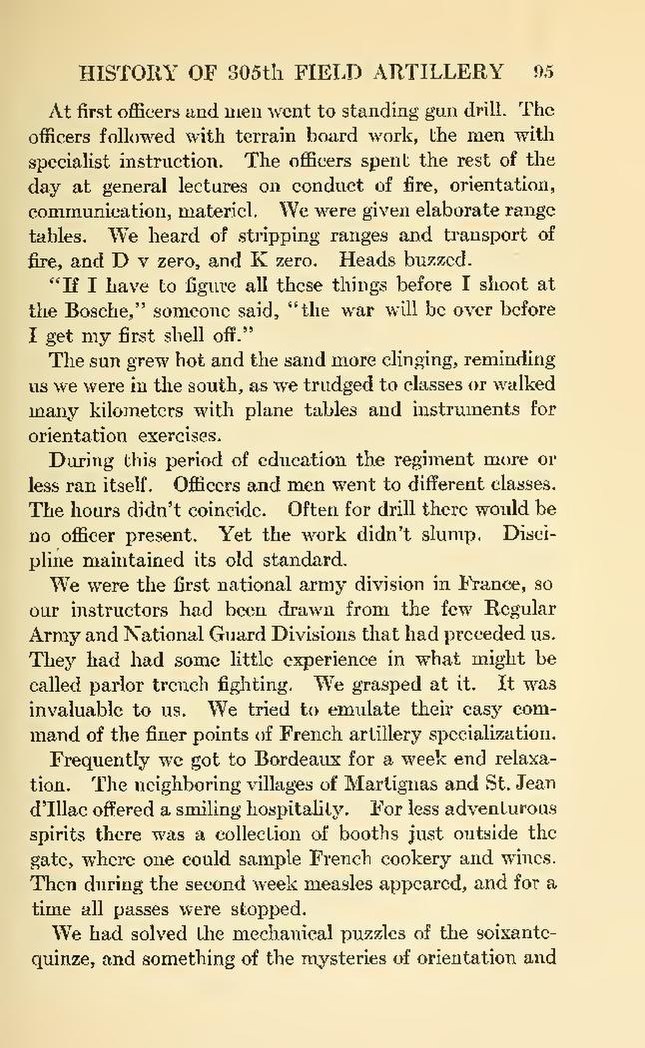At first officers and men went to standing gun drill. The
officers followed with terrain board work, the men with
specialist instruction. The officers spent the rest of the
day at general lectures on conduct of fire, orientation,
communication, materiel. We were given elaborate range
tables. We heard of stripping ranges and transport of
fire, and D v zero, and K zero. Heads buzzed.
"If I have to figure all these things before I shoot at the Bosche," someone said, "the war will be over before I get my first shell off.”
The sun grew hot and the sand more clinging, reminding us we were in the south, as we trudged to classes or walked many kilometers with plane tables and instruments for orientation exercises.
During this period of education the regiment more or less ran itself. Officers and men went to different classes. The hours didn't coincide. Often for drill there would be no officer present. Yet the work didn't slump. Discipline maintained its old standard.
We were the first national army division in France, so our instructors had been drawn from the few Regular Army and National Guard Divisions that had preceded us. They had had some little experience in what might be called parlor trench fighting. We grasped at it. It was invaluable to us. We tried to emulate their easy command of the finer points of French artillery specialization. Frequently we got to Bordeaux for a week end relaxation. The neighboring villages of Martignas and St. Jean d'Illac offered a smiling hospitality. For less adventurous spirits there was a collection of booths just outside the gate, where one could sample French cookery and wines. Then during the second week measles appeared, and for a time all passes were stopped.
We had solved the mechanical puzzles of the soixante-quinze, and something of the mysteries of orientation and
